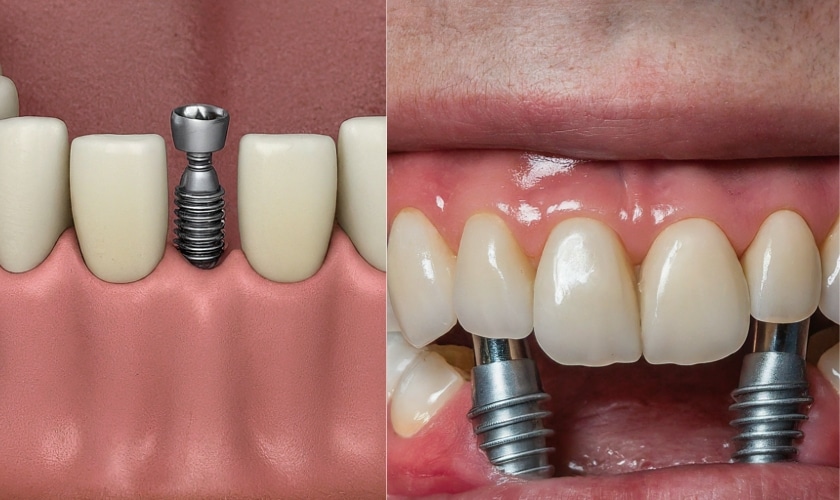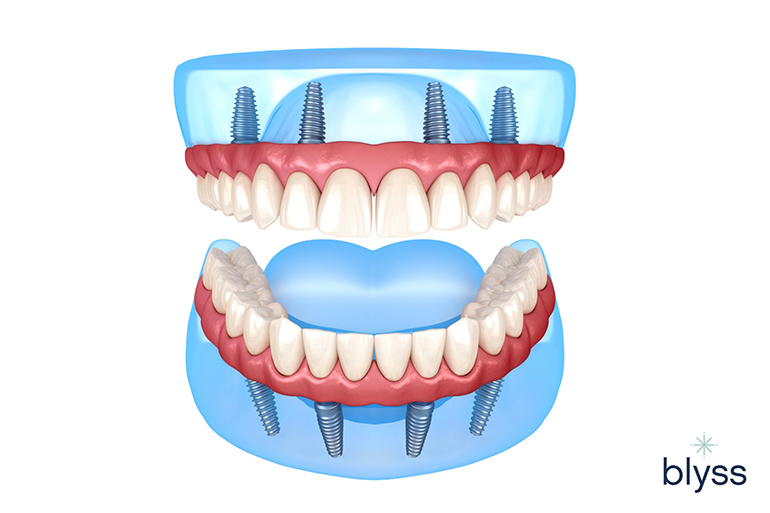9 Easy Facts About Dental Sense Shown
9 Easy Facts About Dental Sense Shown
Blog Article
9 Simple Techniques For Dental Sense
Table of ContentsFascination About Dental SenseThe 30-Second Trick For Dental SenseUnknown Facts About Dental SenseThe Ultimate Guide To Dental Sense
are clinical tools surgically implanted into the jaw to bring back a person's ability to eat or their appearance. They supply assistance for man-made (phony) teeth, such as crowns, bridges, or dentures. When a tooth is shed due to injury or disease, a person can experience problems such as rapid bone loss, malfunctioning speech, or modifications to chewing patterns that lead to discomfort.Dental dental implant systems contain an oral implant body and oral implant joint and may likewise consist of an abutment fixation screw. Cosmetic dentistry services. The oral implant body is operatively placed in the jawbone in place of the tooth's root. The oral implant abutment is typically connected to the dental implant body by the abutment fixation screw and extends through gum tissues right into the mouth to sustain the connected man-made teeth
(https://dentalsense1.carrd.co/)Framework of The Oral Implant System choosing oral implants, speak to your oral provider regarding the prospective benefits and threats, and whether you are a prospect for the procedure. Points to take into consideration: Your total health and wellness is an essential factor in figuring out whether you are a great prospect for oral implants, how long it will certainly require to recover, and the length of time the dental implant might stay in place.
Smoking might affect the recovery process and reduce the lasting success of the dental implant. The healing procedure for the implant body may take a number of months or longer, during which time you normally have a temporary abutment instead of the tooth. the oral implant procedure: Carefully follow the dental hygiene instructions offered to you by your dental supplier.
The smart Trick of Dental Sense That Nobody is Talking About
Implant failing can result in the need for another operation to fix or change the implant system. Restores the capacity to eat Brings back cosmetic appearance Helps maintain the jawbone from reducing due to bone loss Preserves the health and wellness of the surrounding bone and gum tissues Assists keep adjacent (neighboring) teeth steady Improves lifestyle Damage to surrounding all-natural teeth during dental implant placement Injury to the surrounding cells during surgical treatment, such as sinus opening Injury throughout surgical procedure (for instance, fracture of bordering jawbone) Insufficient function, such as feeling like the teeth do not attack with each other normally An experience that the tooth hangs or twisting in location arising from an abutment screw loosening up Implant body failure (looseness of the dental implant body) due to systemic infection, which might be extra likely in individuals with uncontrolled diabetes mellitus due to neighborhood infection in bone and gum tissues sustaining the implant body because of delayed recovery, which may be most likely in clients that smoke Trouble cleansing the gum tissues around the dental implant, causing inadequate oral health Neglected periodontal disease Post-surgical feeling numb as a result of nerve impingement or damages Always alert wellness care service providers and imaging specialists that you have dental implants before any type of magnetic resonance imaging (MRI) or x-ray treatments.
FDA is not familiar with any unfavorable events reported for MRI or x-ray procedures with dental implants. Oral implants systems are commonly made of products that follow global agreement criteria of the International Company for Standardization (ISO) or ASTM International. These requirements have details of what makes a risk-free product.

A dental implant is a framework that replaces a missing tooth. With screw-like tools, the specialist inserts an implant right into the jawbone, and it functions as a support for a man-made tooth, called a crown. A tool called a joint connects the man-made tooth to the dental implant. The crown is custom-made to fit the individual's mouth and match the shade of their teeth.
All About Dental Sense
Some people are not eligible for oral implant surgery. It is for dental specialists to operate individuals with: severe illnessuncontrollable metabolic diseasebone or soft cells condition or infectionIf these issues are settled, an individual can have the surgical procedure. In, dental doctors abstain from operating individuals with: If individuals with any of the above go through dental implant surgery, there is a greater danger of the implant failing.

Dental implant surgery is a customized process. Offer you time to heal. Attach the blog post and last crown, bridge or denture.
Next off, your surgeon will meticulously place the oral implant right into your jaw. If your implant is near the front of your mouth, your dental practitioner will certainly make a temporary tooth for you to use up until you heal.
See This Report on Dental Sense
Your supplier can tell you what to expect in your scenario. During the recovery phase, your jawbone should fuse to the dental implant. This procedure, called osseointegration, is critical for stability and long-term success. This procedure can take anywhere from three to 9 months. In some cases, it might take much longer.
Once your dental implant heals, your dentist can connect the joint (little port message) and your last reconstruction (crown, bridge or denture). This normally takes about one hour to complete and may need a second minor surgical treatment. You shouldn't really feel any kind of discomfort during your dental implant procedure due to the fact that your provider will use medication to numb your gums.
Report this page